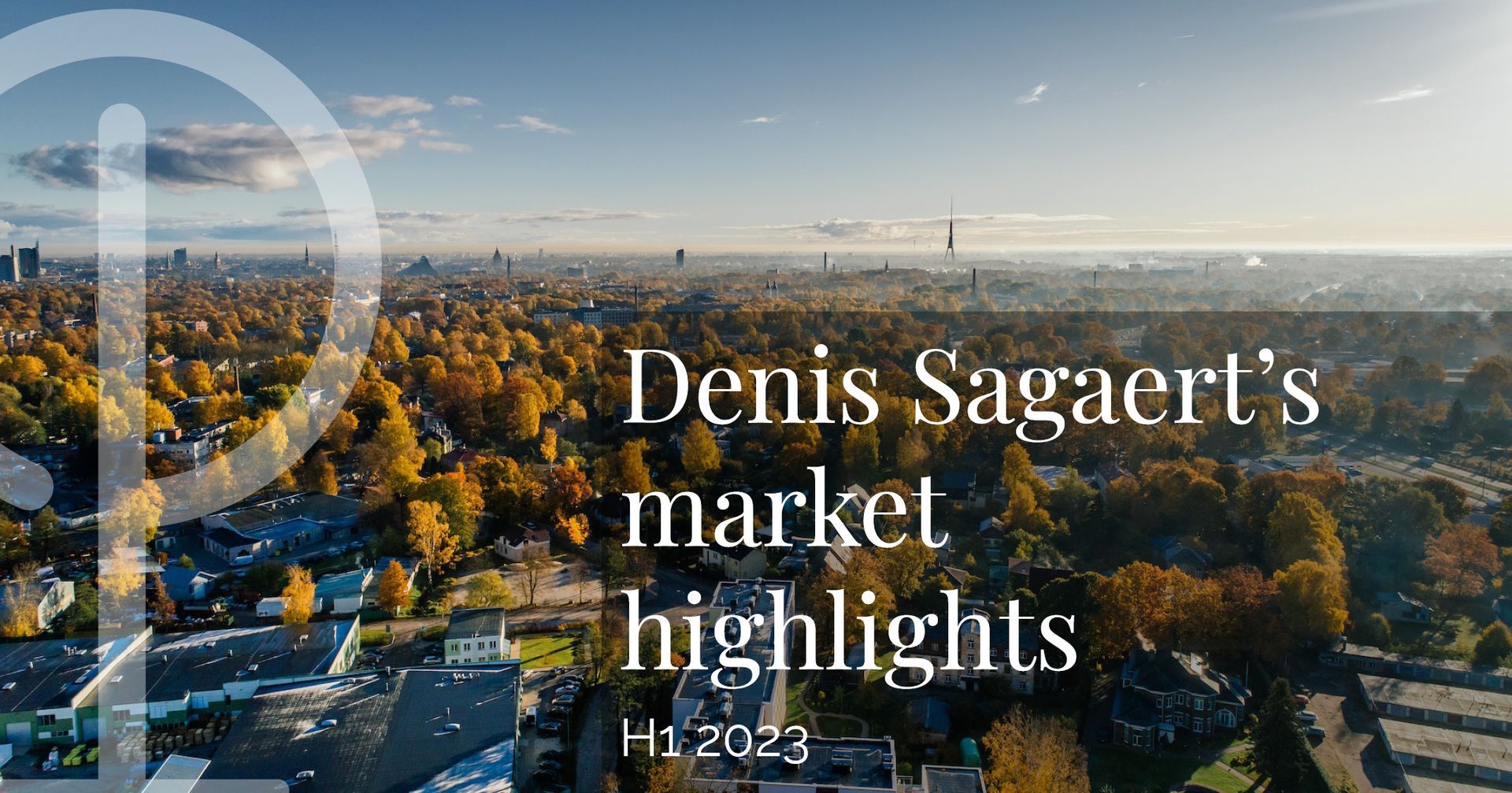Revue des marchés financiers par Denis Sagaert - 1er semestre 2023
Marchés actions : rebond mené par le secteur de la technologie
Les actions mondiales ont très bien performé en juin et ont clôturé le premier semestre sur une hausse importante de 11.5% en euro et 14% en devises locales.
On a observé de fortes différences entre les secteurs. Aux Etats-Unis, trois secteurs se sont distingués : IT, consommation discrétionnaire et communications. Plus spécifiquement, une forte proportion de la hausse est attribuable à 7 sociétés : Nvidia, Apple et Microsoft (IT), Tesla et Amazon.com (consommation discrétionnaire), Alphabet et Meta Platforms (communications). Les perspectives de croissance offertes par l’intelligence artificielle expliquent en partie la performance de ces actions, et même entièrement pour Nvidia (+190%) dans les semi-conducteurs. Il faut y ajouter un environnement macro-économique favorable. L’inflation américaine a diminué, ce qui a enrayé la progression des taux d’intérêt à long terme. C’est cette hausse, et non les mauvais résultats des entreprises, qui avait causé la chute des actions de croissance en 2022.
Ces 7 géants de la bourse américaine représentent aujourd’hui plus de 27% de l’indice S&P 500. Pour se rendre compte de leur impact, on peut comparer la performance semestrielle (+16.6%) avec la performance moyenne de chaque société comprise dans l’indice (+7%). Pour la grande majorité des sociétés, le parcours boursier du premier semestre était donc positif, mais pas exceptionnel.
Dans ce contexte, le Nasdaq 100 a gagné 39%.
Les actions de la zone euro ont également bien performé. L’indice Eurostoxx 50 a gagné 18.4%, grâce notamment aux valeurs technologiques (ASML Holding, Infineon et SAP) et de la consommation (LVMH, L’Oréal, Hermès).
Les sociétés de petite et moyenne capitalisation ont progressé nettement moins que les grandes capitalisations. Les styles d’investissement « value » et « haut dividende » n’ont pas participé à la hausse. On y retrouve notamment une plus forte représentation des banques, de la consommation de base, de l’énergie, de la santé et de l’immobilier.
La performance de l’indice Emerging Markets (+2.6% en euro) est largement inférieure à celle des pays développés, en raison de la performance négative des actions chinoises. Les investisseurs étrangers continuent à craindre l’interventionnisme des autorités chinoises et les tensions avec les Etats-Unis.
Marchés obligataires : légère augmentation des rendements par rapport à 2022
Après une forte hausse en 2022, les rendements obligataires ont légèrement augmenté en 2023. Ainsi le rendement du Bund à 10 ans est passé de 2.28% à 2.39%. De même aux Etats-Unis, où l’obligation du trésor à 10 ans donnait 3.84% au 30 juin contre 3.64% au 31 décembre 2022. Compte tenu du coupon, les indices obligataires ont néanmoins progressé au cours du premier semestre, aussi bien pour les obligations souveraines que les obligations d’entreprise notées « investment grade ». Les obligations d’entreprise de moins bonne qualité (« high yield ») ont fait un peu mieux, avec un gain total de plus de 4% en euro.
Banques centrales : le combat contre l’inflation continue
Les principales banques centrales ont relevé leurs taux directeurs pour lutter contre l’inflation. La Réserve Fédérale a fait passer son taux directeur de 4.25-4.50% à 5-5.25%. La Banque centrale européenne a relevé son taux de dépôt de 2% à 3.5%, niveau le plus élevé depuis 2001. Les courbes de taux en USD et en EUR sont clairement inversées. La politique monétaire plus restrictive des banques centrales n’a pas causé de récession et le taux de chômage américain reste fort bas (3.5%). Par conséquent, les analystes pensent que les taux à court à terme ont atteint leur plafond et vont diminuer vers la fin de l’année ou au début de 2024.
Devises et matières premières : appréciation de l’euro et chute du prix du gaz européen
L’euro s’est légèrement apprécié face au dollar (+1.9%) et bien plus face au yen (+12.1%), à la couronne norvégienne (+11.6) et au yuan.
Il n’y a pas eu de mouvement de grande ampleur sur l’or (+5.2% en USD). Les prix des
matières premières énergétiques et des
métaux de base ont diminué.
Conclusions
Les performances de 2022 et du premier semestre 2023 démontrent qu’il est extrêmement difficile de faire du timing dans les marchés, et qu’il est en tous cas déconseillé de s’inspirer des performances récentes pour réaliser des grands changements tactiques dans son allocation.
Toutefois, ceci n’empêche pas de comparer les valorisations. Le ratio cours / bénéfice du S&P 500 est assez élevé (18.4 pour 2024), alors que les obligations offrent un rendement acceptable. Pour les obligations d’entreprise de bonne qualité en USD, le rendement à maturité moyen est proche de 5.5%.
Même si les actions offrent toujours la meilleure perspective à long terme, leur avantage a diminué. Pour un investisseur dont l’horizon d’investissement est moyen, les obligations offrent une alternative intéressante. Le marché se caractérise aussi par une forte concentration de la performance. Le Nasdaq 100 traite à presque 25 x les bénéfices attendus pour 2024, en ce compris des multiples bien plus élevés pour Tesla, Nvidia, Amazon.com et même Microsoft. On a vu dans le passé que de telles valorisations chez les leaders du marché ont entraîné des performances décevantes, mais là aussi le timing est extrêmement délicat.
A l’inverse, les petites et moyennes capitalisations traitent à moins de 15 x les bénéfices attendus pour 2024 et offrent une bonne marge de sécurité. Nous en conservons donc une part significative dans notre gestion.









